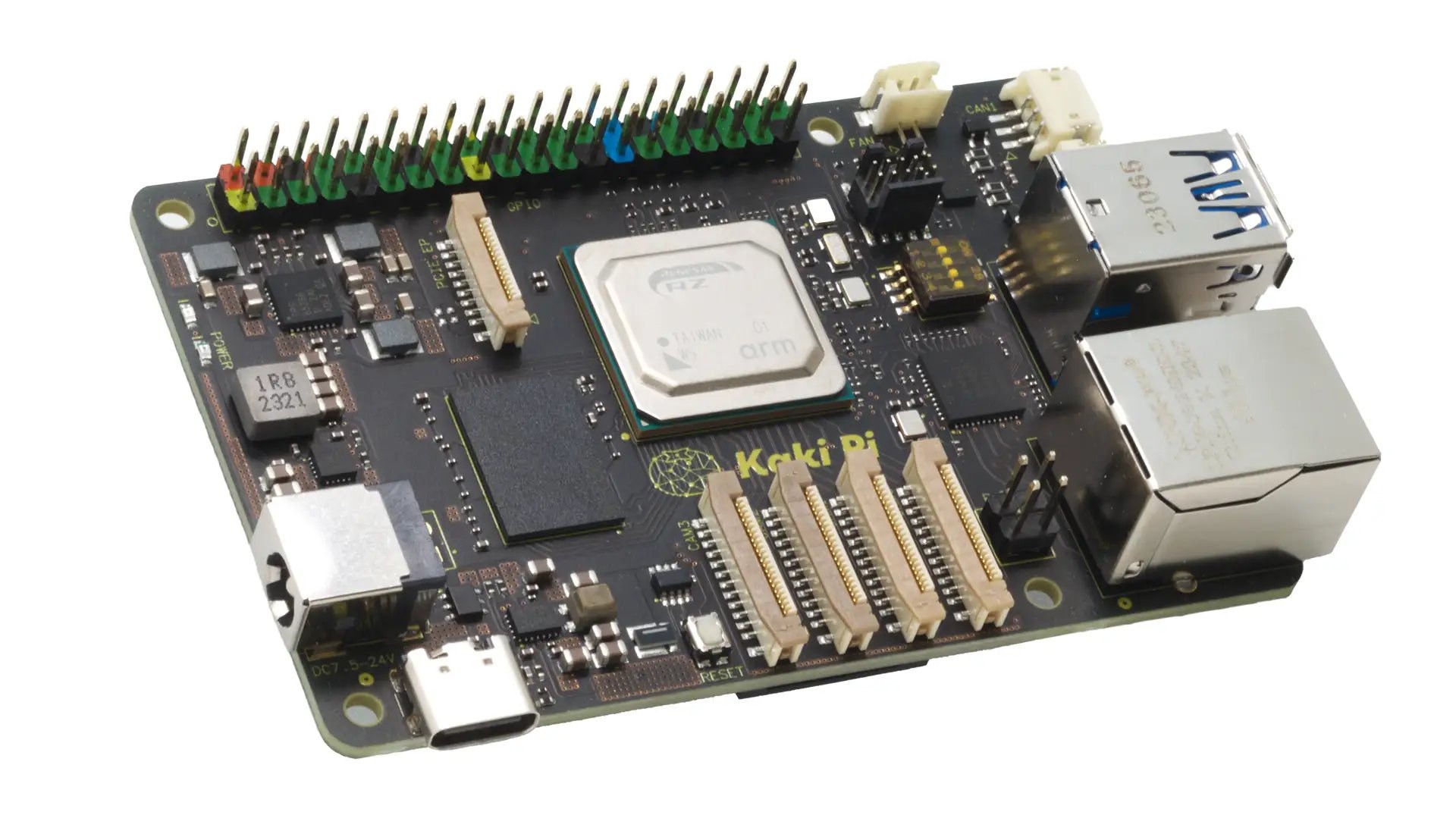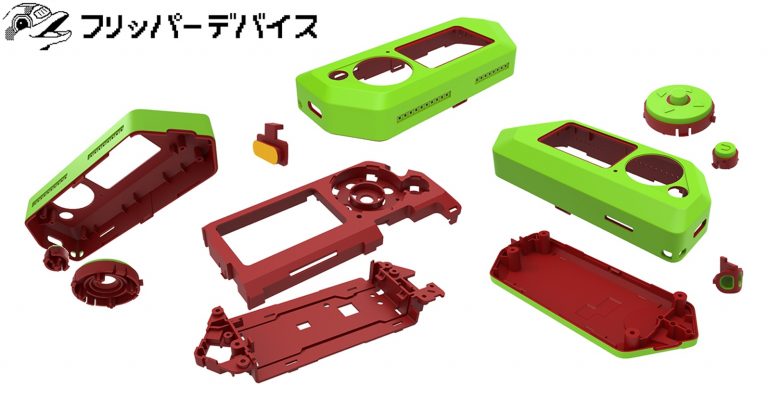What does the market offer to the developer?

As always, electronics manufacturers continue to release new models of single-board PCs. There are more and more of them, which is good news – after all, we are getting systems capable of solving a variety of problems. At the beginning of spring 2024, several interesting models appeared, which are worth talking about in more detail.
EmbedFire LubanCat 4

This is a development board based on Rockchip RK3588S with a mini PCIe connector for Wi-Fi or 4G LTE. The board is equipped with Ethernet, USB, mini PCIe, HDMI 2.1, SIM card holder and microSD. This is quite good for such a miniature device – after all, its size is only 85 * 56 mm.
In addition, there is RAM and main memory – 16 GB and 128 GB, respectively. In the latter case we are talking about eMMC. The device features a Gigabit Ethernet port, five USB ports (including one USB-C), a built-in microphone, multiple audio inputs and outputs, a 40-pin Raspberry Pi-compatible expansion header, and supports HDMI input via an adapter connected to the MIPI CSI port.

The chip here is an octa-core processor with 4 Cortex-A76 cores clocked at up to 2.2-2.4 GHz, 4 Cortex-A55 cores clocked at up to 1.8 GHz. Well, Arm Mali-G610 graphics with support for OpenGL ES 3.2, OpenCL 2.2 and Vulkan 1.2. There is also an 8Kp60 video decoder for H.265/AVS2/VP9/H.264/AV1 codecs, and an 8Kp30 H.265/H.264 video encoder.
As for operating systems, the board supports Android 13, Debian, Ubuntu and ROS.
The single-board device is not that cheap, its price is about $105, this is for the basic model with 4 GB of RAM and without eMMC. The cost of a device with 16 GB of RAM and 128 GB of main memory is about $180. Quite a lot, but as far as one can judge, the fee is worth it.
Banana Pi BPI-M6

A single-board computer of a familiar form factor. It is based on the SenaryTech SN3680 SoC, also known as Synaptics VideoSmart VS680. This device became known more than a year ago, but only now the company began shipping its devices.
The SoC consists of a quad-core ARM Cortex-A73 processor, a Cortex-M3 real-time core, an Imagination GE9920 GPU and an NPU that delivers peak performance up to 6.75 TOPS.

The developers equipped the device with 4 GB of LPDDR4 RAM and 16 GB of eMMC flash memory. In addition, the device is equipped with four USB 3.0 Type-A ports, a USB Type-C port, an Ethernet port, plus two HDMI ports. One for exit, the other for entry. Accordingly, the single-board can process the incoming video stream in real time.

It is also capable of playing video in 4K quality, as well as processing two 1080p/60Hz video streams in parallel using H.264 and VP8 codecs. There is also a 40-pin connector, plus an M.2 Key 2232 socket, a MIP-DSI interface and a memory card slot.
This single-plate device works with Android and Ubuntu 20.04. Not long ago, single-board manufacturers posted several videos that demonstrate the board's AI capabilities.
![]()
The device costs about $80, depending on the seller. Some are a little cheaper, some are a little more expensive.
Kaki Pi

This single-board game with the original naming was released by the Japanese, not the Chinese. Manufacturer: Yurydenki-Shokai Co. Ltd. The system is based on Renesas RZ/V2H Arm with a powerful 80 TOPS AI accelerator. The form factor is “raspberry”, with the usual highlights like a 40-pin GPIO, PCIe 3.0, as in the Raspberry Pi 5, and four 22-pin MIPI CSI connectors. As far as we know, all this is compatible with Raspberry Pi accessories.
RAM – LPDDR4 with a maximum capacity of 8GB. There is a microSD card, a 22-pin MIPI DSI header for the display, a Gigabit Ethernet port, two USB 3.0 ports, two CAN Bus connectors. Here is the full list of characteristics of this board:
- SoC: Renesas RZ/V2H, CPU/MCU cores, quad-core Arm Cortex-A55 up to 1.8 GHz. Dual-core Arm Cortex-R8 real-time microcontroller with frequencies up to 800 MHz. Arm Cortex-M33 microcontroller core up to 200 MHz for system control
- GPU – Arm Mali-G31 GPU
- ISP – Mali C55
- NPU – DRP-AI3 up to 8 TOPS (INT8) or 80 TOPS (Sparse), dynamically reconfigurable DRP processor (STP4).
- System Memory – 2GB, 4GB or 8GB LPDDR4 memory clocked at up to 1333MHz.
- Memory – microSD card slot
- Video Output – 22-pin 4-lane MIPI DSI connector
- Video Inputs – 4x 22-pin 4-lane MIPI CSI headers
- Network – Gigabit Ethernet RJ45 ports.
- USB – 2x USB 3.0 ports
- Extensions: PCIe 3.0 x1 FFC header compatible with Raspberry Pi 5 header, 40-pin GPIO header (mostly) compatible with Raspberry Pi header with 26x GPIO, UART/I2C, SPI, I2S, PWM, 5V, 3.3 B and GND. Note: GPIO operates at 3.3 V, 2x CAN bus connectors
- Dimensions – 85 x 56 x 19 mm (same as Raspberry Pi Model B)
As for software, the Japanese provide their own Yocto Linux SDK. OS such as ROS2 is also supported.
ASUS Tinker Board 3N

This is a more serious board; by the way, it was first introduced in April 2023. In the same year it received the name Tinker Board 3N. The manufacturer, ASUS, offers three different system options:
- Tinker Board 3N.
- Tinker Board 3N Plus – can be used in industry or used in fairly harsh conditions, with temperatures ranging from -40°C to 85°C.
- Tinker Board 3N Lite – with one Gigabit Ethernet port no PoE support, no M.2 B-key connector for NVMe SSD or 4G/5G cellular, no 16MB SPI. flash memory, fewer serial interfaces and no CAN bus.

The board is compatible with OSes such as Debian 11 and Android 12. Additionally, it supports ASUS IoT.
New HAT+ for Raspberry Pi 5

Here we are no longer talking about a single-board device, but about accessories for it. Namely, for the Raspberry Pi 5. The PineBerry Pi company specializes in developing additional modules for the Raspberry. And recently it introduced five new products at once:
- HatNET! 2.5G – 2.5GbE for Raspberry Pi 5 based on Realtek RTL8125BG controller, dedicated range of MAC addresses (i.e. not randomly assigned). There is also RJ45 with activity and connection LEDs.
- HatDrive! NET 1G – Gigabit Ethernet (Realtek RTL8111H) and M.2 M-Key connector for NVMe SSD 2230,2242. Implemented via an ASMedia PCIe Gen 2 switch. Unfortunately, there is no boot from SSD yet.
- HatDrive! AI – Two M.2 PCIe slots: one M-Key slot for NVMe 2230/2242 SSDs and one E-Key slot for Google Coral Edge TPU module or other compatible M.2 module. Boot via ASMedia PCIe, similar to the option above.
- HatDrive! Dual – Same as above, but with two M.2 M-Key PCIe slots for NVMe 2230/2242 SSDs. RAID-1 is supported for data redundancy.
- HatBRICK! Commander – Adds two PCIe FPC slots to the Raspberry Pi 5 via Media PCIe for daisy chaining any number of PCIe HAT+ cards.






